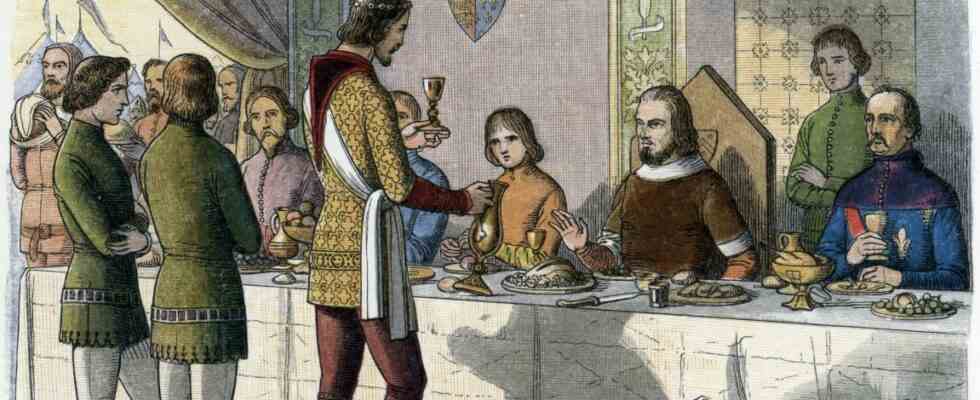King Ine was evidently a hungry man. At the end of the seventh century AD, the regent of the Anglo-Saxon kingdom of Wessex codified in writing what he expected as a tribute from ten farmsteads: 300 loaves of bread, two whole cattle, over 40 liters of honey, ten geese, 15 liters of butter and a total of 630 liters of ale – um to name only a part. Lists like these have been used in English medieval studies since the 19th century as evidence for a property tax called feormwhich is said to have existed in the British Isles in the early Middle Ages.
The free peasantry was therefore forced to make regular donations to the royal household in the form of food. Its supply was largely dependent on it. Judging from these lists, the royal diet was extremely unhealthy: a little bread enriched with animal fats and lots of meat. These registers led to the fact that the idea that the Anglo-Saxon nobility consisted of convinced carnivores dominated in historical scholarship. But did such an unbalanced diet really correspond to reality?
Bone analyzes now show: probably not. Bio-archaeologist Sam Leggett from the University of Edinburgh and historian Tom Lambert from the University of Cambridge agree feorm got to the bottom together. You now have your results in the journal Anglo Saxon Journal released.
The archaeologist found no connection between status and a meat-heavy diet
Leggett has analyzed more than 2,000 early medieval bone samples from various archaeological sites and cemeteries in the former Kingdom of Wessex, in what is now southern England. Grave goods and the positioning of the bones provide information about the social status of the deceased. The archaeologist specifically examined samples from all walks of life. She analyzed stable isotopes, atomic types of different weights of an element, which allow conclusions to be drawn about the origin and environment of the sample. In particular, the isotope ratios of nitrogen and carbon say a lot about the diet. The motto “You are what you eat” becomes the scientific method.
Leggett then compared the results of this isotope analysis with the rank of the dead, and lo and behold: she found no connection between a protein-rich, i.e. particularly meat-heavy diet and the social status of a deceased. “The isotopic evidence suggests that diets throughout this period were much more similar across social groups than we previously thought,” says the archaeologist. Accordingly, the nobility did not consist of meat fanatics, quite the opposite: the royal household apparently ate a fairly balanced diet and, like its subjects, was mainly based on grain. Beef or poultry were only sometimes on the menu. Flexitarians are more likely to hit it.
But what about the lists full of animal products? They contradict the isotopic finding. Tom Lambert therefore pounced on the written evidence on which historians based this feorm defined as property tax. He came to a different conclusion: the lists were not lists of required taxes, but basically orders for huge festivals.
Kings, nobles and peasants ate the same food at great festivals
There is no written evidence that anything like an exploitative food tax existed in early medieval England, the historian said. Rather, the evidence indicates that the free peasants invited the royal household to large festivals at irregular intervals. The number of participants is said to have moved around 300 people. “These were special occasions when the legitimacy and authority of the king was publicly acknowledged,” says Lambert. The lists were therefore “not blueprints for the daily diet of the elite”, but rather part of party planning.
If the scientists are right, it should feorm to be rethought. Instead of a tax in kind, a kind of impersonal proto-tax, institutionalized festivals would then have to be assumed. Although these were not necessarily given voluntarily, the difference to a property tax is not as insignificant as it might seem, argues Lambert. Because at a festival, farmers and kings enter into a host-guest relationship. While the nobility may have received the best cuts of meat, there was more than enough for everyone, and each participant ended up eating the same thing. Perhaps there was an air of equality about such a banquet. And away from these revelries, a modest, grain-based diet permeated all walks of life. The eating habits of the Anglo-Saxon kings therefore hardly differed from those of their subjects.
King Ine abdicated in 726 to embark on a pilgrimage to Rome. You can also congratulate him retrospectively on his apparently balanced diet. If he had feasted as historians have said he did over the past 150 years, he could probably have rolled to the finish line.

